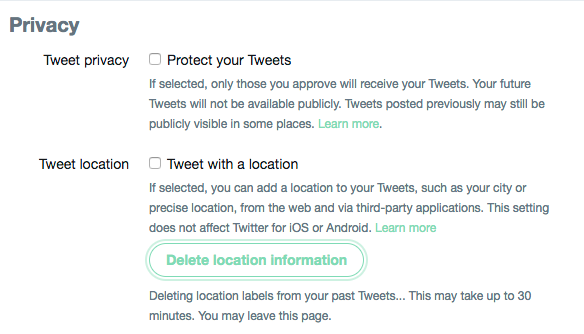In the wake of the Cambridge Analytica scandal, which revealed that up to 50 million people may have had their Facebook data harvested without their knowledge, many people have started to think differently about their data settings.
Facebook isn’t the only company that shares your data, either for advertising purposes or through third parties with your consent.
Twitter also shares information from its users, and while it doesn’t contain anywhere near the amount of personal and private data that Facebook does, it can still support third-party apps and does hand over anonymous information to advertisers.
If you’re worried about which apps you might have connected to Twitter – or just want to curb the amount of information you’re handing over – then here are some simple but meaningful changes you can make to your settings.
How to remove apps connected to Twitter
This is a straightforward process thanks to simple fact that most of our Tweets are public anyway, it’s unlikely that you will have handed over complete control of your account to a malicious third-party.
Click on your Twitter profile picture in the top right-hand side and then click on Privacy and Settings.

Then head over to the left-hand side of the screen and click where it says Apps.

You will now see a full list of the apps that you have given access to Twitter. You’ll note under each of them that they will have three types of permission either: read, read and write or read and write and direct messages.
This effectively tells you how much access you’ve given them. For example, if it only says read then they can only access the tweets that you have sent, read and write on the other hand allows that app to see your tweets and even tweet on your behalf.
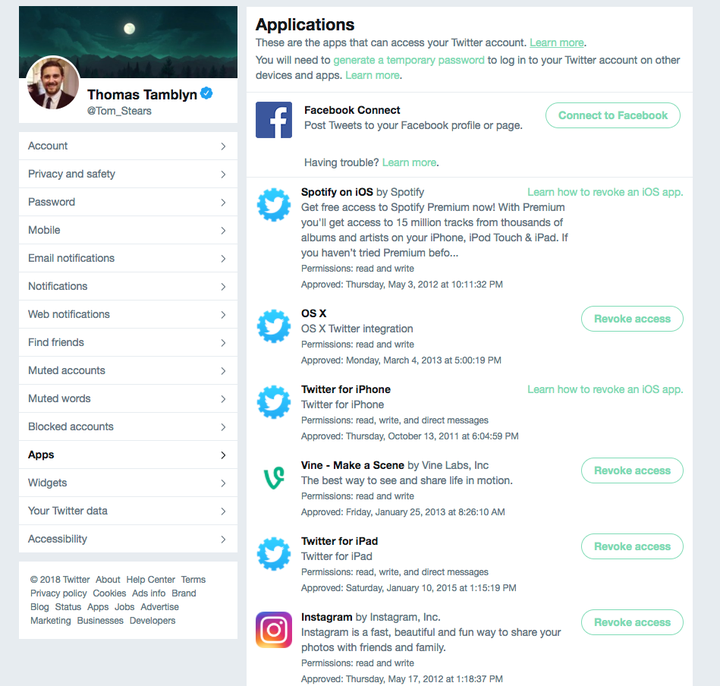
The vast majority of these are absolutely fine, but if one does catch your eye that you’re concerned about then you can instantly remove its access by clicking Revoke access.
If you’re particularly concerned about that app then Twitter’s official recommendation is to immediately change your password after pressing that button.
Note: You should never usually have to enter your Twitter username and password in a separate app. If you are asked, proceed with caution.
How to stop sharing your Twitter data with advertisers
Twitter has some really comprehensive controls on what you share with ads and in some cases it might shock you at how much information an advertiser can get even when Twitter shares the data anonymously.
Go to Privacy and settings by clicking on your Twitter profile picture in the top right-hand side of the screen.
Now click on the menu that says Privacy and Safety.
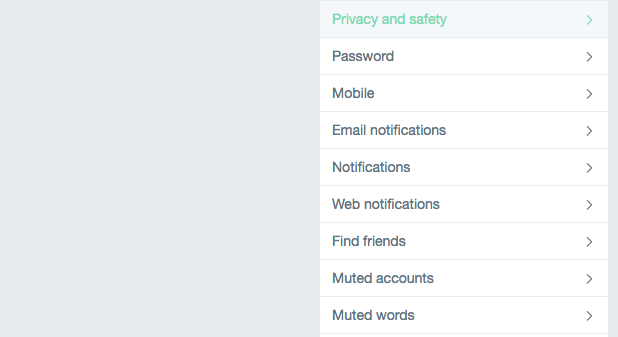
Now scroll down until you see Personalization and Data listed, it won’t have a button like the others but next to it you can click on the word Edit.
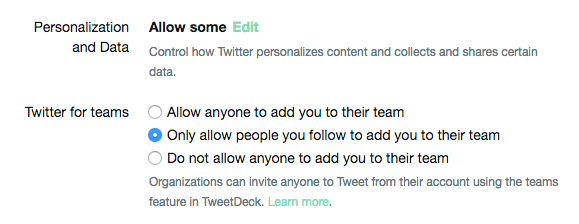
This is the advertising menu for Twitter and within it you can customise how little or how much information you want to share in the service of getting personalised adverts on your Twitter feed.
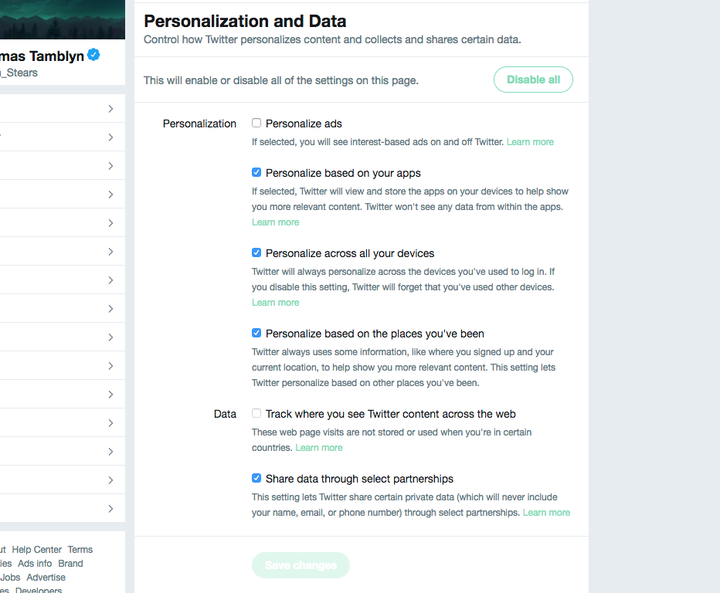
There are two settings in particular worth paying attention to:
Share data through select partnerships is the first one. Now Twitter acknowledges it “does not share name, email, phone number, or Twitter handle with RTB partners.”
However, it then goes on to admit that, “RTB partners may, however, connect the device-level data we share to a user’s name, email, phone number, or Twitter handle based on other information in the partner’s possession (for example if the user signed up for an account with that partner’s service).”
In plain English, if Twitter and another service you’re signed up to have a partnership then that other service might be able to see Twitter’s anonymous data and work out that it’s actually you which is a little creepy.
Personalize based on your apps will look at the apps installed on your phone and deliver adverts on this, it won’t look within those apps and Twitter says it does try to “exclude apps that appear to be especially sensitive, such as ones dealing with your health, sexual orientation, or religious beliefs.”
It should be noted Twitter does do an excellent job explaining what each setting relates to and you can click Learn more to discover more.
If all of these make you feel uncomfortable then rather than unticking each box you can simply press Disable all at the top.
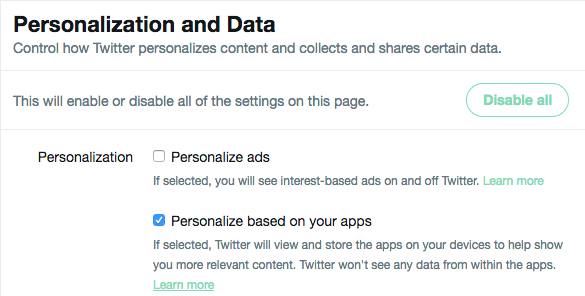
How to turn off your location on Twitter
Finally here’s a simple tip on how to turn of your location or to delete previous locations that were associated with tweets.
Head to Settings and privacy by clicking on your profile in the top right-hand side of the screen. Then click on Privacy and safety on the left-hand side of the menu.
The second option is called Tweet with a location. Untick this box. If you want to delete any previous locations from tweets you sent in the past then below it click Delete location information. This might take a while so be patient.
